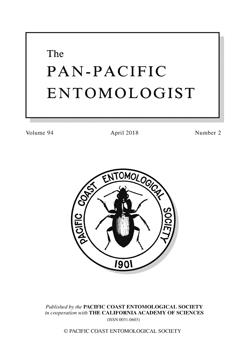Longhorn beetles (Coleoptera: Cerambycidae) feed during their larval stage on wood from recently dead or diseased trees and may have a wide variety of hosts. However, reports of larval hosts for Cerambycidae could be misinterpreted from field observations. The use of freshly cut branches to attract longhorn beetles is a method that provides reliable information about which hosts they use. This study reports new records of larval hosts of longhorn beetles in the tropical dry forest of San Andres de la Cal, Morelos, Mexico. In the study area, species of woody plants were sampled, from each of which sections of branches were cut and left exposed to local field conditions for two months to attract beetles. Branches were later collected and placed in emergence chambers. A total of 26 species of Cerambycidae emerged from the branches of 51 species of woody plants of the families Apocynaceae, Araliaceae, Burseraceae, Celastraceae, Convolvulaceae, Euphorbiaceae, Fabaceae, Juglandaceae, Malpighiaceae, Malvaceae, Moraceae, Oleaceae and Rubiaceae. For all 26 cerambycid species, we found previously unreported hosts, and for nine species, the hosts we report are the first recorded in the literature. The nine species whose host relationships have not been previously reported are: Euderces basimaculatus Giesbert & Chemsak 1997; E. pulcher (Bates, 1874); Elytroleptus grandis Linsley 1935; Neocompsa puncticollis asperula (Bates, 1885); Acanthoderes (Pardalisia) lacrymans (Thomson, 1865); Olenosus serrimanus Bates, 1872; Oreodera brailovskyi Chemsak & Noguera, 1993; O. copei McCarty, 2001 and Spliaenothecus picticornis Bates, 1880.
BioOne.org will be down briefly for maintenance on 17 December 2024 between 18:00-22:00 Pacific Time US. We apologize for any inconvenience.
How to translate text using browser tools
13 July 2018
New host records of Cerambycidae (Coleoptera) from central Mexico
Orthon R. Vargas-Cardoso,
Angélica M. Corona-López,
Víctor López-Martínez,
Alejandro Flores-Palacios,
Rodolfo Figueroa-Brito,
Víctor H. Toledo-Hernández
ACCESS THE FULL ARTICLE
<
Previous Article
|

The Pan-Pacific Entomologist
Vol. 94 • No. 2
April 2018
Vol. 94 • No. 2
April 2018
cut branches
Escarabajos saproxílicos
host use
ramas cortadas
saproxylic beetles
uso de hospedero




